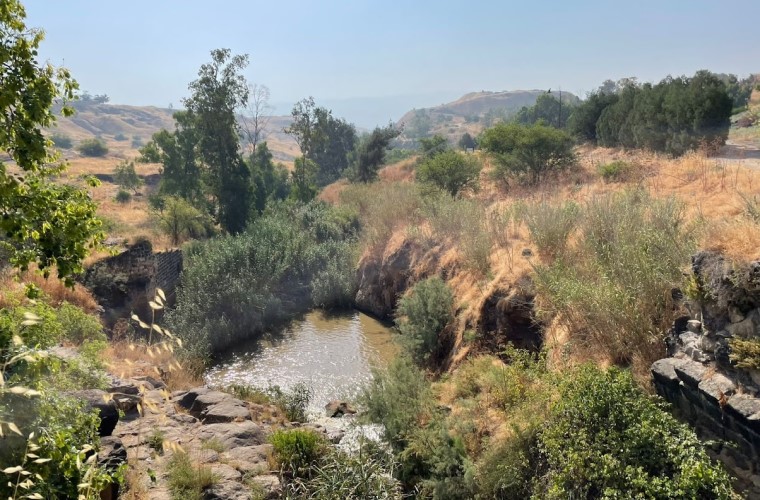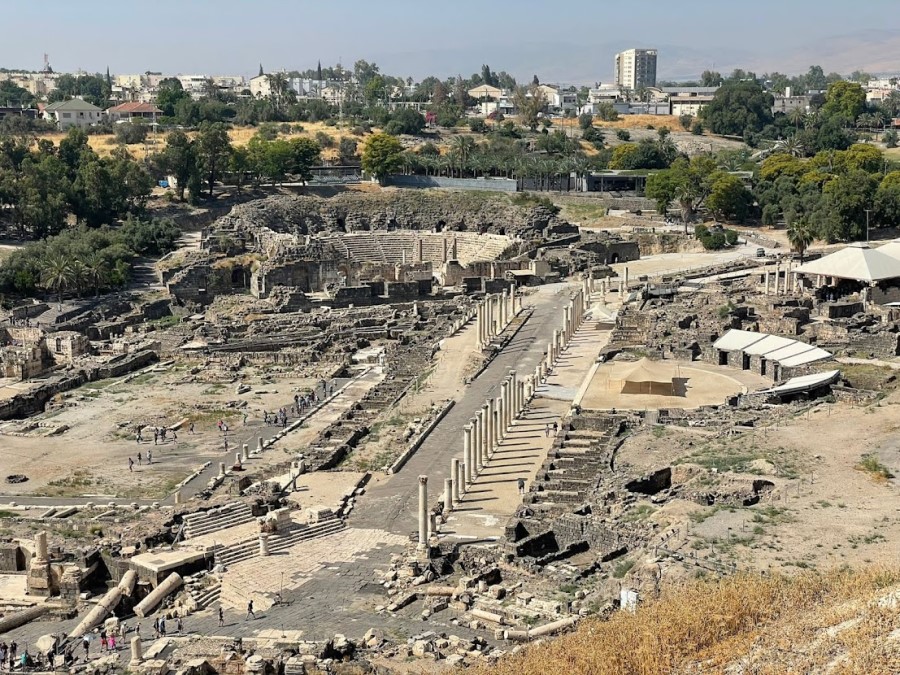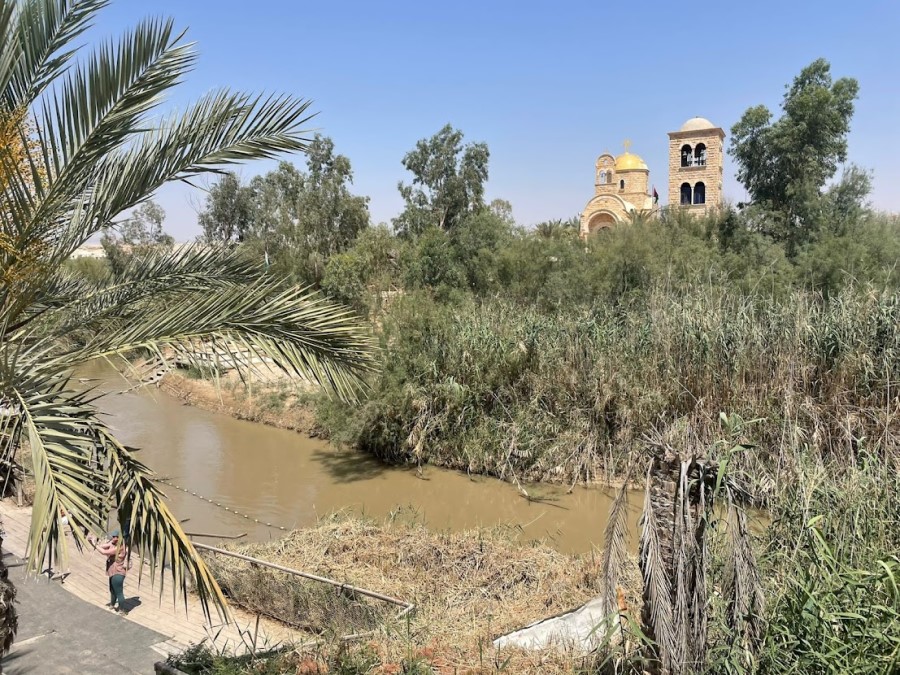Shalom!
Today we left Galilee to explore the Jordan Rift Valley, that is, the land beside the Jordan River as the river flows out of Galilee and toward the Dead Sea. It was a very hot day (over 100 degrees in the valley!), so we had to be strategic about how much time we spent in the sun. Here are a few highlights from the day.
Before the day really warmed up, we visited the ancient site of Beth Shean. Beth Shean was a Canaanite city with ties to Egypt (the remains of an Egyptian palace are visible on the city’s hill). The Israelites did not initially conquer Beth Shean (Judges 1:27), and so, when King Saul and his sons died in battle against the Philistines on nearby Mount Gilboa, the Philistines hung the bodies at Beth Shean (1 Sam 31:8-10). Beth Shean came under Israelite control in the united monarchy period but was later lost during Assyria’s initial invasion of the northern kingdom (around 732 BC). A few centuries later, Alexander the Great and his successors settled mercenaries at the site (specifically in the valley below the hill) and renamed the city “Scythopolis.” After Romans took control of the area around 63 BC, they renamed the city “Nyssa” in honor of Dionysis, the god of wine, and further developed the site. The city became part of the Decapolis, or group of ten Gentile cities on the edge of Roman Judea governed independently (cf. Mark 7:31). Much of Nyssa-Scythopolis has been uncovered today, including an agora, bathhouse, theater, temple, and public latrine.
The day was already hot by the time we arrived at Qasr Al-Yahud, the traditional site of Jesus’ baptism in the Jordan River (Mt 3:13-17). The site is on the pathway to the city of Jericho and is probably the site of two other theologically significant events involving the Jordan River: the miraculous crossing of the river under Joshua to conquer Canaan (Josh 3:14-17) and the parting of the Jordan before and after Elijah was taken to heaven (2 Ki 2:7-14). The site was also a good place for us to see and learn more about the river itself. The Jordan is much smaller than I expected and colored dirt-brown; looking at the river, I quickly understood Namaan the Leper’s initial contempt for it (2 Ki 5:10, 12). Though a dam prevents the Jordan from flooding today, the Jordan periodically flooded in biblical times, greatly expanding its width of about 75-100 feet to as much as 1-2 miles. The Israelites crossed the Jordan at flood stage (Josh 3:15; 4:18), meaning that God did a notable miracle in having the people cross over on dry ground (Josh 3:17).
Our last stop for the day was the site of the ancient city just west of the famous Jordan crossing: Jericho (Tel es-Sultan). Jericho was the first city of Israel’s conquest under Joshua, and the OT gives us several notable details about the city’s destruction: the city was fortified with walls (Josh 6:5); the city was attacked just after barley harvest (Josh 3:15); the siege of the city was brief and the inhabitants had no opportunity to flee with their goods (Josh 6:1, 15); the city fell after its walls toppled (Josh 6:20); Israelite warriors were able to go “up” into the city after the walls fell (Josh 6:20); at least one house in the wall (Rahab’s) was spared destruction (Josh 6:22-23); and the city and its regular goods were not plundered but burned (Josh 6:17-19, 24). All of these details have been confirmed by archaeologists at Tel es-Sultan! Incredibly, however, the majority of archaeologists today do not affirm the Bible’s account since they (erroneously and unjustifiably) date the destruction to around 1550 BC, too early to be Joshua’s conquest around 1406 BC. The picture above is of an uncovered section of one of Jericho’s two mudbrick walls, toppled outwards and serving as a ramp for the Israelites to climb into the city.




